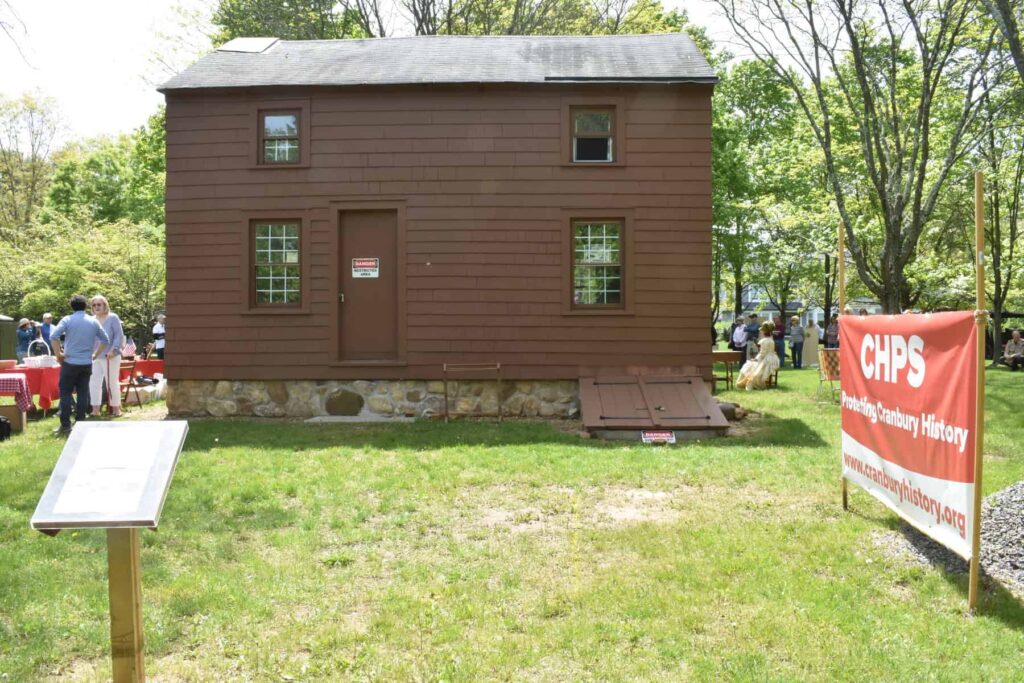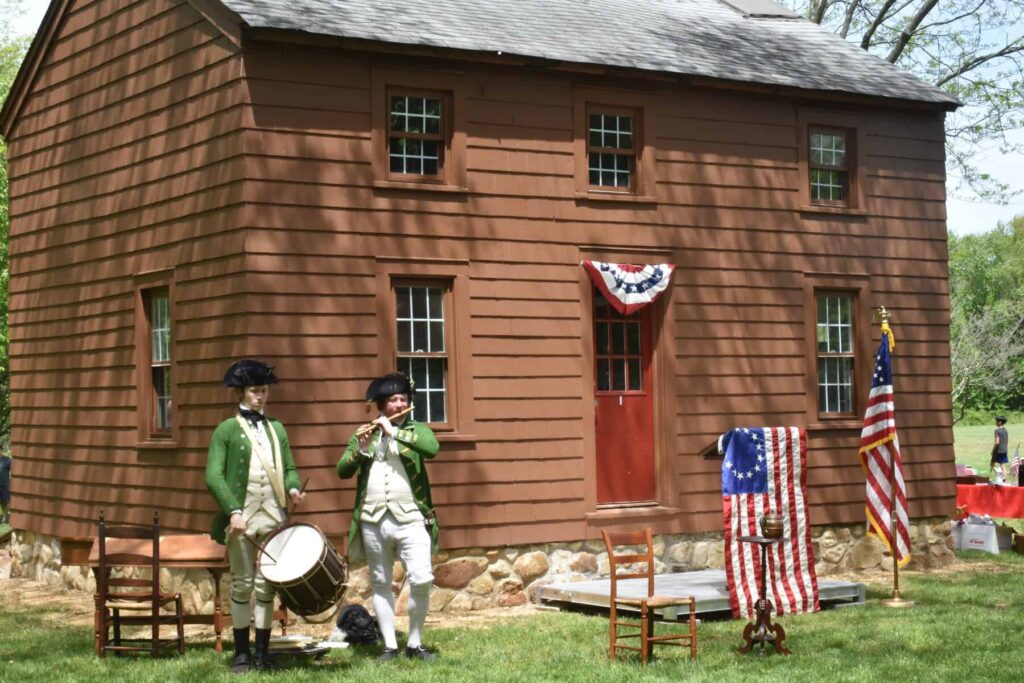Cranbury Historical Preservation Society saves 1713 East Jersey Cottage, working to restore site into seasonal museum
After years of hard work, the history of a 1713 East Jersey Cottage continues to come alive as a restoration project turns the historic home into a seasonal museum.
Cranbury residents were able to learn more recently about the cottage and take a first-hand look at the status of restoration efforts through the project’s initial phase during a Colonial Fair and Picnic at the cottage’s site in Cranbury-Millstone Park on May 7.
“Our goal for the fair was to introduce our community to this historic gem and I think we succeeded. Some people saw when the house was moved, and it has definitely transformed over the past few years,” said Karen Kelley, Cranbury Historical Preservation Society [CHPS] trustee and museum curator.
The state tax parcel database gives a 1713 date for when the cottage was built, which was on a 550-acre property originally sold in 1693 by the proprietors of East New Jersey to Thomas and Robert Fullerton, who were Scottish investors, according to CHPS.
The 1693 date for when the property was sold is several years before Cranbury’s first recorded buildings in 1698.
“It is heartwarming to see so many people young and old being proud of another historic gem in Cranbury,” Kelley said. “We need to renew our sense of where we started out and maybe it will bring us together a little bit more.”
The cottage is representative of the homes the first Scottish settlers in Middlesex County would live in. As a one-and-a-half story timber framed structure there would be a basement below, a kitchen with a fireplace, living rooms and sleeping loft above.

CHPS has noted the original hand-hewn post and beam structure of the building still exists, and so do the tree trunk beams on the first floor in addition to pegged mortise and tenon joints. River stone from the Millstone River made up the foundation and CHPS has river stones in the foundation of the current structure.
“It is sites like these that offer us a real unique glimpse into our nation’s history. The cottage ties to the American Revolution and early history of Cranbury’s township,” said state Sen. Linda Greenstein (D-14).
She further added, “That is why we must do the work to preserve and restore these windows to the past to give us all an opportunity to see Cranbury through a different lens. To really dig into the history of our region and learn from where we have been to appreciate where we are going.”
CHPS saved the 1713 cottage from being demolished and acquired the home in May 2019. The local organization funded the white painted home’s move from 87 Old Trenton Road to Cranbury-Millstone Park in October 2019.


So far in the initial phase, since the relocation and being stabilized on a new foundation, CHPS was able to have the original foundation river stones reinstalled on the exterior foundation, so it looks closer to how it would have been originally, Kelley said.
Additionally, the exterior of the building is brown and no longer white.
“We were able to remove the vinyl siding that was on the building, aluminum trim and all the modern ornamentation to peel back the layers and expose the cedar siding that was below it,” said Steve Golisano, trustee of CHPS. “The structure’s steel plates have been repaired in some of the areas where they were more damaged.”
CHPS patched and repaired the cedar siding to keep everything that was salvageable and only installed new boards, where damage had taken place. They also reworked and repaired any trim around the building windows and removed some of the fascia and more modern soffits (material that connects a roof to the exterior wall).
“We are getting ready to do the windows, doors, and stone steps. The stone steps are going to be in the front and back of the building and be able to take weight on top of them,” Golisano added. “We are trying to make them out of the same stones that we have onsite from the original stones.”
The rest of the stones on the site will be used for cottage projects such as the rain garden behind the back of the building. The rain garden will collect a certain volume of water when it rains and allow for it to recharge the ground water resources for plants in the area.
The plant list for the rain garden will contain 59 plants and include swamp milkweed, Cherokee sedge, and marsh marigold.
“Then we will be setting up for signage and other different ways, finding elements that will help tell the story of the building when no one is here to explain it,” Golisano said. “That will be part of it when it becomes the seasonal museum, and we are able to do the renovations on the inside and get it to be open to the public hopefully in the next year or two.”
CHPS is a volunteer organization that continues to seek funding and help to complete the restoration of the 1713 East Jersey Cottage.
Major exterior updates remain to the windows, doors, the roof, chimney, and some of the other exterior hardware.
“We want to have this house be the link between the settlement of this area and its interaction with local inhabitants, the local Lenni-Lenape tribes, and the good and bad of all the interactions,” Golisano said. “It really is pre-Revolutionary stuff. Telling the story of what led up to the revolution and also the colonization and settlement story.”
It’s about filling in those gaps of a story that might not have been regularly told.
“We eventually want this to be a seasonal museum that is furnished to the appropriate time of the 1700s and also have seasonal events outside,” Kelley added.
For more information about the 1713 East Jersey Cottage, visit www.cranburyhistory.org. To help CHPS continue restoration efforts on the cottage by either donating funds or skilled professional experience email [email protected].


